
Karl Marius Anton Johan Hals was a Norwegian businessperson who co-founded the piano manufacturer Brødrene Hals. He also served as a members of the Norwegian Parliament with the Conservative Party.

Barchmann Mansion is a Baroque style town mansion overlooking Frederiksholm Canal in central Copenhagen, Denmark. Built in the early 1740s to designs by Philip de Lange, it is also known as the Wedell Mansion after the current owner. It was listed in the Danish registry of protected buildings and places in 1918. An extension from 1748 is now home to Johan Borup's Folk High School.

Ny Vestergade is a street in central Copenhagen, Denmark. It runs from Frederiksholms Kanal to Vester Voldgade and together with Christiansborg's riding grounds, Marble Bridge and Dantes Plads forms an axis between Christiansborg's tower in the east and Ny Carlsberg Glyptotek's dome in the west. The National Museum's main entrance is located in the street.

Vestergade is a street in central Copenhagen, Denmark, linking Gammeltorv in the northeast with the City Hall Square in the southwest. The street defines the southern boundary of Copenhagen's Latin Quarter. Most of the buildings in the street date from the years after the Copenhagen Fire of 1795.

The Karel van Mander House /Danish: Karel van Manders Gård) is a historic building located at the central shopping street Strøget (Østergade) in Copenhagen, Denmark. It takes its name after the artist Karel van Mander III (1609-1670) who was a resident for a few years. It later played host to the gentlemen's club Kongens Klub from 1776 to circa 1850.A Hugo Boss flagship store now occupies the ground floor.

Frederiksholms Kanal 16–18 are two almost identical listed properties overlooking Frederiksholm Canal in central Copenhagen, Denmark. The Victorian Home, a 15-room, late 19th-century bourgeois home now operated as a historic house museum by the National Museum of Denmark, is located on the second floor of No. 18. The Attorney general (Rigsadvokaten) is based at No. 16. Both buildings were listed on the Danish registry of protected buildings and places by the Danish Heritage Agency on 6 April 1969.

Tre Hjorter is a former hotel located on the corner of Vestergade and Larsbjørnstræde in the Latin Quarter of central Copenhagen, Denmark. It now houses a bar on the ground floor. The building was listed on the Danish registry of protected buildings and places in 1939.

Vestergade 14 is a property located at the corner of Vestergade and Larsbjørnsstræde in the Latin Quarter of Copenhagen, Denmark. No. 14 and the neighbouring building at No. 16 were jointly listed on the Danish registry of protected buildings and places in 1939.

The Obel House is a Neoclassical property located at Vestergade 2 in the Latin Quarter of Copenhagen, Denmark. It was listed on the Danish registry of protected buildings and places in 1918.

Niels Hemmingsens Gade 32 is a historic building in the Old Town of Copenhagen, Denmark. It was built in the first half of the 1740s. A brewery was for more than one hundred years operated in a rear wing. Brødrene Cloëtta, one of Denmark's leading chocolate manufacturers of its day, was based in the building from 1865 until 1901. The three-winged building complex was listed on the Danish registry of protected buildings and places in 1981. A gilded Neptune figure is seen above the gateway and the keystone features the names of the first owners. Notable former residents include the naval officers Poul de Løvenørn and Peter Nicolay Skibsted, the businessman Conrad Hauser and the linguist Rasmus Rask.

Ny Vestergade 9 is an 18th-century building located across the street from the main entrance to the National Museum in central Copenhagen, Denmark. Former owners include court painter Hendrick Krock, printmaker Hans Qvist, Royal Armourer Christian Kyhl and wholesaler Jacob Stilling-Andersen. The building was listed in the Danish Registry of Protected Buildings and Places in 1932.
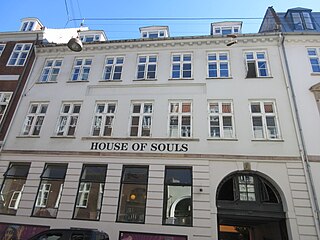
Vestergade 3 is a Neoclassical property in the Old Town of Copenhagen, Denmark. The building was constructed as part of the rebuilding of the city following the Copenhagen Fire of 1795. It was listed in the Danish registry of protected buildings and places in 1959. Notable former residents include the clergy Christian Bastholm and the painters Albert Küchler and Jørgen Roed.
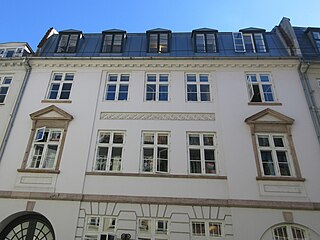
Vestergade 5 is a Neoclassical property in the Old Town of Copenhagen, Denmark. The building was constructed for the owner of the tobacco manufacturer Chr. Augustinus Fabrikker in 1797 and the company was until 1870 based in the complex. It was listed in the Danish registry of protected buildings and places in 1918.
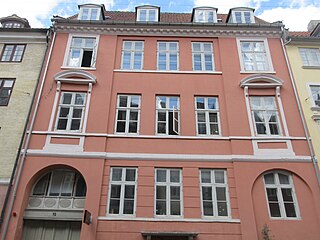
Studiestræde 10 is a Neoclassical property in the Latin Quarter of Copenhagen, Denmark. The building was listed in the Danish registry of protected buildings and places in 1964.

Studiestræde 24 is a Neoclassical property on Studiestræde in the Latin Quarter of Copenhagen, Denmark. The building was listed in the Danish registry of protected buildings and places in 1959. The Red–Green Alliance is based in the building. Notable former residents include the painter Georg Hilker.

Vestergade 24 is a Neoclassical property in the Latin Quarter of Copenhagen, Denmark. It is now part of the newspaper Politiken's headquarters, The building was listed on the Danish registry of protected buildings and places in 1959.

Gammel Strand 38 is a Neoclassical property overlooking Slotsholmen Canal in the Olt Town of Copenhagen, Denmark. The building was listed in the Danish registry of protected buildings and places in 1945. Krogs Fiskerestaurant, one of Copenhagen's oldest fish restaurants, occupies the ground floor of the building. Notable former residents include author Thomasine Gyllembourg and her son Johan Ludvig Heiberg, banker Gottlieb Abrahamson Gedalia and chocolate manufacturer Anthon Berg.
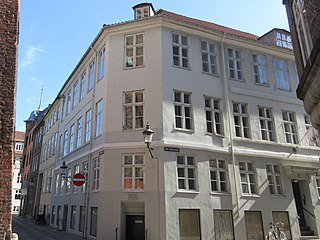
Lille Kirkestræde 1/Nikolaj Plads 28 is a Neoclassical corner building situated in front of the former St. Nicolas' Church, now Kunsthallen Nikolaj, in central Copenhagen, Denmark. It was listed in 1945. The building was like most of the buildings in the area constructed following the Copenhagen Fire of 1795. It was listed in the Danish registry of protected buildings and places in 1945.

Kringlegangen is a passageway linking the square Gråbrødretorv with the street Valkendorfsgade in the Old Town of Copenhagen, Denmark. A bakery was operated on the site from before 1787 until at least the 1910s. The present building complex was constructed in 1856-1857 for master joiner Carl Heinrich Winther. The passageway was not opened to the public until 1975. The name Kringlegangen was inspired by a gilded kringle above the entrance from Gråbrødretorv as well as to the twisting and turning course of the passageway. The entire building complex was listed in the Danish registry of protected buildings and places in 1945.
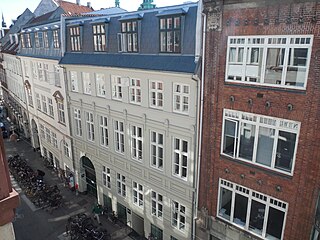
Vestergade 7 is a Neoclassical building complex situated close to Gammeltorv in the Old Town of Copenhagen, Denmark. It was constructed for royal building inspector Andreas Kirkerup as part of the building of the city following the Copenhagen Fire of 1795. The property was listed on the Danish registry of protected buildings and places in 1991. Notable former residents include the master builder Johan Boye Junge and archeologist Peter Oluf Brøndsted. The Danish Institute for Study Abroad (DIA) is now based in the building. The adjacent building at Vestergade 5 is also owned by the Danish Institute for Study Abroad.























